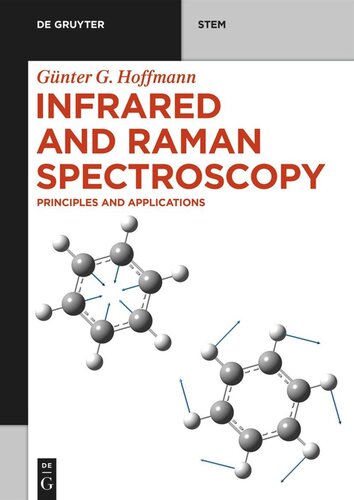

Most ebook files are in PDF format, so you can easily read them using various software such as Foxit Reader or directly on the Google Chrome browser.
Some ebook files are released by publishers in other formats such as .awz, .mobi, .epub, .fb2, etc. You may need to install specific software to read these formats on mobile/PC, such as Calibre.
Please read the tutorial at this link: https://ebookbell.com/faq
We offer FREE conversion to the popular formats you request; however, this may take some time. Therefore, right after payment, please email us, and we will try to provide the service as quickly as possible.
For some exceptional file formats or broken links (if any), please refrain from opening any disputes. Instead, email us first, and we will try to assist within a maximum of 6 hours.
EbookBell Team

0.0
0 reviewsQuite a few excellent books about vibrational spectroscopy have already been published. So why write a new one? The last years have seen the birth of new techniques and, first of all, a wealth of new applications. Therefore, a lot of new users need an introduction to these techniques and applications, but, if they are new to vibrational spectroscopy, an introduction to the parent techniques as well.
Vibrational spectroscopies can detect and analyze vibrations in molecules. Mainly two different forms are used today: Infrared and Raman spectroscopy.
Vibrational spectroscopy is used by chemists to characterize their substances. If the spectra of substances are known, analytical chemists can use them to analyze a mixture of chemicals. Samples may be analyzed even with spatial resolution, on the microscopic as well as on the macroscopic scale.
"Infrared and Raman Spectroscopy" is intended for researchers or lecturers in Chemistry, Physics, Materials Science and Life Sciences, who are interested in the composition and properties of their samples. It describes how vibrational spectroscopy will enable them to examine thin layers, surfaces and interfaces, and also improve their knowledge about the properties of composites. Special chapters introduce VCD, ROA, and TERS.
The book can serve as a short introduction to vibrational spectroscopy too, so that students at the first graduate level will benefit from it as well.